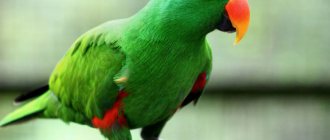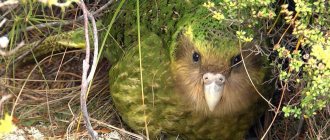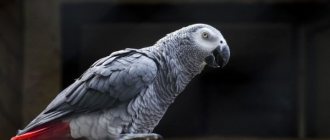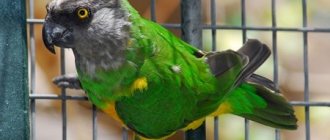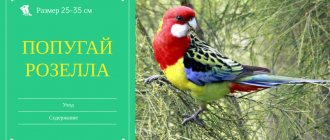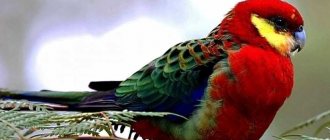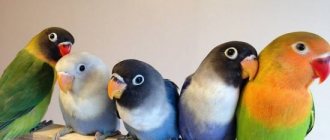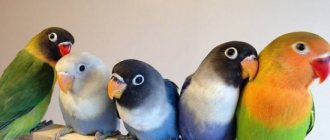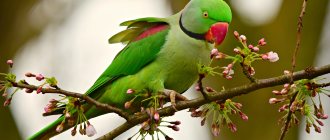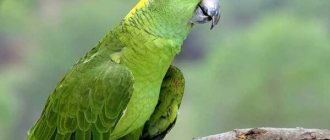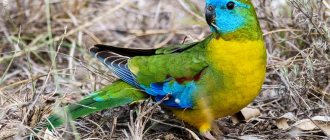Artistic, cheerful and fiery, the caique parrot is a holiday bird. There's never a dull moment with him. With his amusing dances and mind-blowing somersaults, he is able to conquer anyone. You should not expect that the caique will sit peacefully on a perch and quietly chirp - such behavior is not typical of this perky parrot. He knows his worth and immediately makes it clear who is in charge. Let's talk about the strange bird: what it looks like, where it lives, how many years it can live. And most importantly, is it easy to keep it at home?
General characteristics
These birds are quite rare among breeders, although they have many undeniable advantages, which include an attractive appearance, ease of taming, artistry and cheerfulness. There are 5 subspecies of parrots, but all birds grow up stocky and beautiful.
The most common for home breeding are black-capped caiques, which have the following characteristics:
- body length is approximately 24 cm;
- weight varies from 170 to 200 grams;
- a black head with bizarre plumage, and there is a feeling that a cap is put on the head;
- orange irises;
- yellow-orange cheeks and throat;
- gray beak;
- green upper feathers on tail, back and wings;
- light yellow belly.
Chicks differ from adults in having a light iris, which gradually becomes brownish-red. This difference persists for one year of the bird’s life. The standard life expectancy is 30 years, but an individual who has lived 22.6 years is officially considered a long-liver.
In the photo there is a black-headed white-bellied parrot:
Lifespan
With proper maintenance and care in captivity, a caique parrot can live up to 20 years. According to the International Zoo Yearbook, the maximum documented lifespan is 22.6 years.
The White-bellied Parrot is a beautiful bird that loves company and quickly gets used to its owners. With proper care, he will live for many years and will delight both adults and children with his behavior. If you liked the article or have something to add, then leave your comments and also join our VKontakte group.
Habitat caique
Caiques are found naturally in the northern regions of South America. Therefore, you can admire them when visiting Ecuador, Colombia, Brazil, Peru or Guyana. Birds choose places for permanent residence that are remote from human habitations. Preference is given to humid tropics.
White-bellied parrots live mainly in Ecuador and Peru, and are also sometimes found in Bolivia and Brazil. For living, they choose areas located near water bodies, and also hide from people and predators in the crowns of trees.
It is also useful to read: Cockatoo parrots
Choose carefully
Passerine parrots receive a wide variety of reviews. It all depends on which bird you chose. Don't make mistakes. Do you really want a pet that you won’t like, that you’re afraid of, that you feel sorry for wasting your free time on, and that you’ll simply regret buying soon?
When choosing a bird, don't focus on appearance alone. Many people buy beautiful parrots but end up giving them away to someone else. The fact is that all birds are different. Each of them may have its own oddities that the owner simply cannot come to terms with.
Don’t forget that parrots are long-lived. They can become your child's faithful friends from kindergarten to graduation. You should not make a choice directly at the market or in a store. Think everything through in advance.
Lifestyle and diet
Typically, caique parrots live in large flocks of up to 30 individuals. Sometimes they live in pairs or even mix with flocks of other breeds of parrots. They gather in numerous flocks only when there is abundant food in the chosen territory.
Features of their lifestyle include:
- birds begin to be active at dawn or order;
- during the flight they emit loud screams, and parrots have an unpleasant and shrill voice, so their screams can be heard from afar;
- caiques do not like to travel significant distances, as they get tired quickly, so they prefer to fly only from branch to branch;
- the birds climb rocks and jump trees very well, as they have strong legs;
- in the wild they feed on plant seeds, fruits, vegetables, berries, nuts or flowers;
- they often destroy agricultural land, and are especially fond of corn;
- during feeding of the flock, several individuals are appointed to monitor safety and also notify fellow tribesmen of imminent danger;
- the nesting period completely depends on the location of the flock, so it can begin in October or May;
- parrots choose tree hollows to raise their chicks;
- the female lays approximately 4 eggs, which incubate for 26 days;
- chicks become independent birds in just 10 weeks, after which they leave the nest forever;
- Sexual maturity of parrots occurs 2 years after birth.
Although the birds prefer to keep their distance from people, they often destroy farmland in search of food.
Reproduction in the wild
Kaiki become sexually mature by the age of 3 years. Birds form pairs for life. But if they lose a partner, they can easily create a new family. The mating season falls on different months of the year (depending on distribution):
- Guiana, Guyana - from December to February.
- Venezuela, Peru - in April.
- Colombia, Brazil - from April to May.
- Suriname, Ecuador - from October to November.
After a short period of courtship, the female lays eggs in the hollow (one clutch contains up to 4 eggs), which she incubates for 26 days. Both parents are involved in feeding the offspring. At about 1.5 months, the chicks fledge, and closer to 2 months of age they begin to fly out of the nest. Usually, grown-up birds do not leave their parents, but continue to live nearby, forming family communities.
Despite the small size of Caikis, they build their nests in hollows at a height of at least 30 meters from the ground.
Is it possible to keep at home
Caique parrots are considered rare birds, and many difficulties arise during breeding.
Therefore, in Russia and other countries there are too few nurseries offering this breed of parrots. Usually they are brought to Russia from the Czech Republic.
Although birds are considered inaccessible and also expensive, they take root well at home, and there is no need to create any specific living conditions for them.
Birds easily adapt to different conditions, but in order for a parrot to live a long time without any diseases or other problems, it is important to adhere to simple rules.
These include:
- choose the right place for the cage or enclosure, since the pet should not be in a draft or near heating devices;
- Every day you need to release the parrot for a long flight, and walks should last at least 2 hours;
- a varied diet is provided from high-quality products or grain feeds;
- If your pet’s mood or behavior suddenly changes, you should urgently contact a veterinarian, as this indicates illness or exposure to parasites.
The bird should not be alone all day , so it needs to be given as much attention as possible, otherwise it will begin to feel sad, which leads to serious health problems.
Choosing a cage or aviary
If you plan to buy a caique chick, you must first prepare a room for it and also choose a place to live. The cage is installed exclusively in a room where the temperature does not fall below +19 degrees, and moderate humidity is maintained. It is important to make sure there are no drafts.
For a caique, a spacious cage is purchased in which the parrot can spread its wings or jump on perches . The structure must have strong walls and a reliable lock that the bird cannot open with its beak. It is advisable to choose cages whose size is at least 85x45x55 cm. Inside there are drinking bowls, feeders, toys and a bath.
Caique parrots are clean pets that need cleanliness, so the cage will have to be cleaned 2 times a week, and the bird is also periodically sprayed with warm water from a spray bottle.
Organization of proper nutrition
The health of a parrot depends on the quality of its diet. The base consists of grain mixtures, which include millet, wheat, millet, sunflower seeds or corn cobs. Additionally, berries, fruits, vegetables, herbs, nuts and vitamin supplements are included in the diet. It is important to periodically give nettle leaves, which are previously doused with boiling water to destroy harmful bacteria or parasites.
Birds should be given branches of fruit trees regularly, as they contain many useful substances, although they are pre-treated with boiling water.
Caikis do not eat boiled eggs, so if your pet needs calcium, it can be replenished with low-fat cottage cheese or bread soaked in milk.
Communication and games
For home keeping, it is recommended to choose small chicks that are not yet 6 months old. These birds are easy to tame and teach various tricks. If you purchase an adult, it will remain wild forever.
The learning process begins after a period of adaptation, when the bird calmly accepts the presence of a person. Afterwards you can talk to her or teach her various tricks. The bird needs constant play, so different toys are purchased for it.
Caikis are considered active and cheerful pets, so you need to buy different balls, rattles, puzzles and mirrors for them . They learn quickly and are also trainable. But parrots of this breed cannot imitate human words, although they reproduce various everyday sounds or melodies.
Birds need daily walking, as this is necessary for optimal condition of muscles and joints.
Caiques are considered artistic pets that dance a lot, sing or attract people's attention with various tricks. They make unusual jumps, jerk their heads, chirp or hang on one leg. It's funny to watch them fight with toys or fall on their backs. If a bird becomes tame, then it constantly rubs its beak against the owner’s hands, demanding attention and affection.
It is also useful to read: Corella parrots
Taming
It is advisable to buy young parrots, no older than 6 months. An adult bird will be much more difficult to tame. You should not start training right away; the caique must get used to its new place of residence. In order for it to become attached to its owner, the breeder should be near the cage more often and talk to the pet. The parrot gets used to it quite quickly and easily makes contact with humans.
How to tame a parrot correctly
Features of education
When the taming process is completed, you can move on to education. Caiques may begin to chew on furniture. To prevent this from happening, he needs to be given twigs and toys. The bird is able to understand the word “impossible,” but it should not be pronounced loudly and sharply, but in a calm, but slightly stern tone. The parrot does not get along well with other animals, but will quickly make friends with its own species.
Capabilities
Black-headed caiques are very energetic and artistic birds. They are able to learn several tricks, such as jumping and somersaults. The animal has short legs, so it needs to walk a lot and climb on perches and ladders. This parrot cannot repeat human speech, but it perfectly imitates a variety of sounds, for example, alarms, alarm clocks, and even the crying of a child.
Purchase rules
It is quite difficult to purchase a caique bird, since it is offered by a limited number of nurseries. Usually such parrots are imported from the Czech Republic , where several breeders live. The cost of a black-headed caique ranges from $450 to $700, and if the red-headed parrot is chosen, its price is approximately $750.
If a person has a large and free amount of money, and also wants to get a cheerful and active pet, then a parrot of this breed is considered the ideal choice.
Where do they live
This question may seem strange to some. After all, everyone knows that parrots live only in warm countries. However, ringed parrots broke this tradition a little. More precisely, they initially lived in tropical countries - mainly in India, Thailand, Sri Lanka and a number of small states located on the Indochina Peninsula.
But in the early to mid-20th century, thousands of individuals were exported to Europe, where keeping colorful exotic birds just became fashionable. Many parrots flew away due to inept care. Of course, some died due to the unusual climate and surrounding flora and fauna. But, not surprisingly, some survived and gave birth to offspring. As a result, today ringed parrots can be seen, although very rarely, in Germany, England, Belgium and Holland.
Average lifespan
A very important factor that many breeders consider before purchasing a new pet is its lifespan. It is not surprising - one does not want the parrot, to which the owners have just become attached, to die suddenly. And another, on the contrary, does not want to have a pet that can live for decades - after all, this is a serious responsibility.
Well, the ringed parrot will be a good choice for serious owners who want a friend for many years. Most varieties have a lifespan of 20 to 30 years. The larger the breed, the longer they live. The large ringed parrot is considered to be a long-liver.
Is it possible to teach them to talk?
One of the first questions people ask when they decide to get a parrot is: “Will it talk?” It depends on the breed - some are able to master dozens and even hundreds of words. Others are unable to voice even a couple.
Fortunately, ringed parrots are distinguished by their intelligence - individuals with whom their owners work diligently are able to remember 50-60 words and even phrases. To speed up the learning process, here are some tips:
- Start learning with the simplest words - short, preferably monosyllabic.
- For any success, reward the bird - pet it, give it some kind of treat.
- Never yell at a parrot if it fails to achieve success for a long time - there will be no benefit from this, but it may cause fear of you.
- Conduct lessons in silence, when nothing will distract the bird from your words.
External signs of a white-bellied sea eagle.
The white-bellied eagle has a size: 75 - 85 cm. Wingspan: from 178 to 218 cm. Weight: 1800 to 3900 grams. The plumage of the head, neck, belly, thighs and distal tail feathers is white. The back, wing coverts, primary wing feathers, and main tail can be dark gray to black. The iris of the eye is dark brown, almost black. The white-bellied sea eagle has a large, gray, hooked beak that ends in a black hook. Relatively short legs are devoid of feathers, their color varies from light gray to cream. The claws are large and black. The tail is short, wedge-shaped.
White-bellied sea eagle (Haliaeetus leucogaster)
White-bellied sea eagles exhibit sexual dimorphism, with females being slightly larger than males. The average male Eagle is 66 to 80 cm, has a wingspan of 1.6 to 2.1 m, and weighs 1.8 to 2.9 kg, while the average female is 80 to 90 cm long, 2.0 to 2.3 m wingspan and weighs from 2.5 to 3.9 kg.
Juvenile white-bellied sea eagles have different colors than adult birds. They have a head with cream feathers, except for a brown stripe behind the eyes. The rest of the feathers are dark brown with cream tips, except for the white feathers at the base of the tail. The coloration of the adult eagle's plumage appears gradually and slowly, the feathers changing colors like pieces of fabric in a patchwork quilt. The final color is established at the age of 4-5 years. Juvenile white-bellied eagles are sometimes confused with Australian eagles. But they differ from them in their pale colored head and tail, as well as in the large wings that the birds rise up noticeably.
